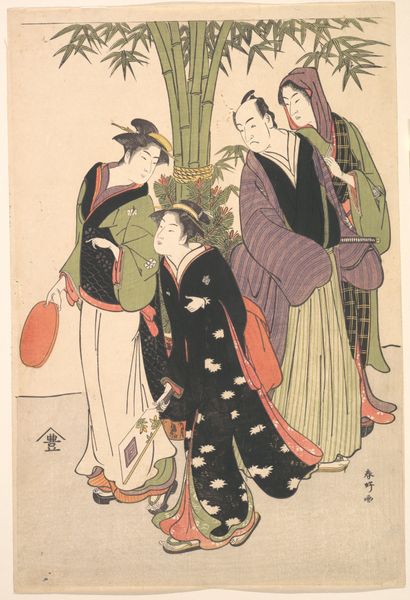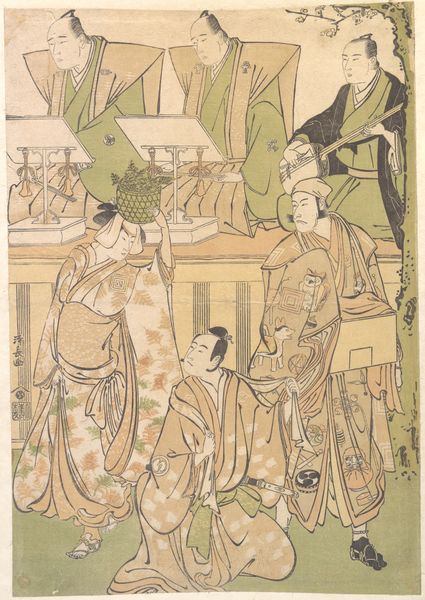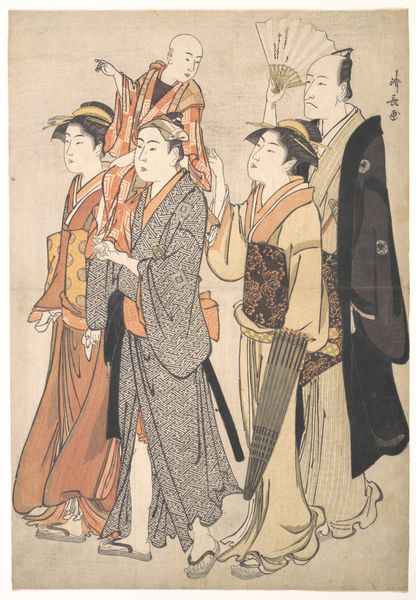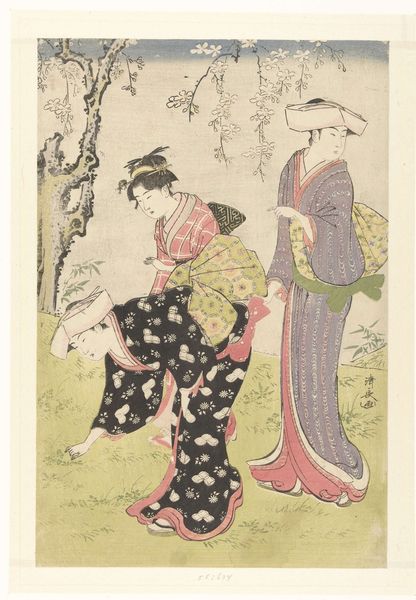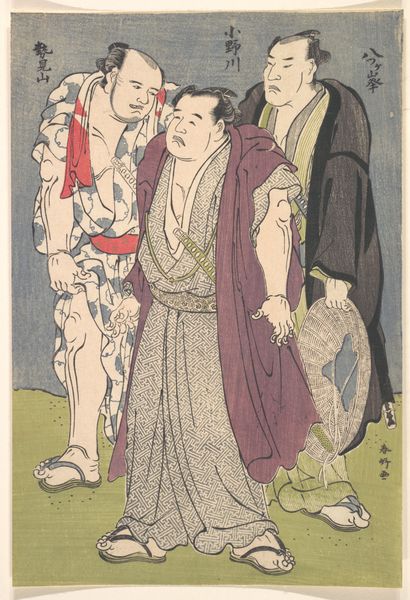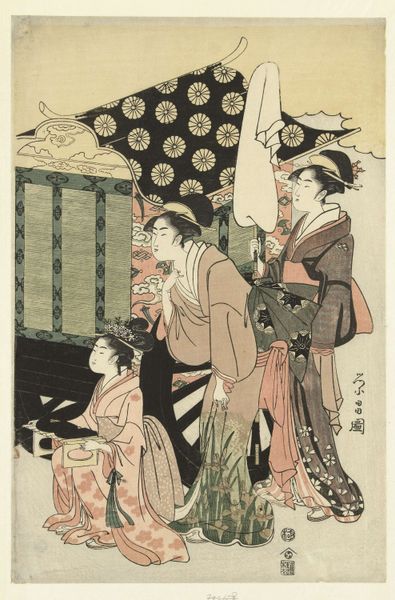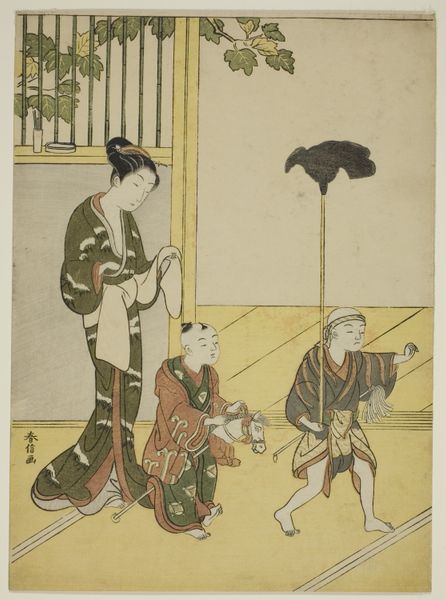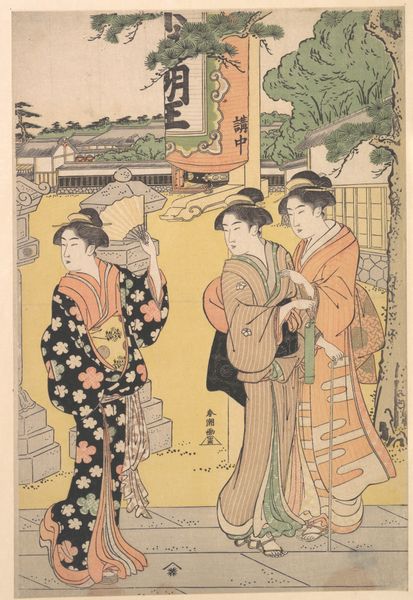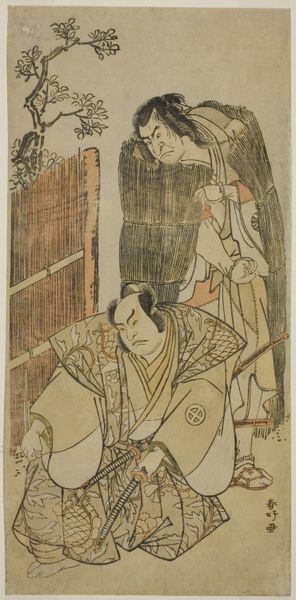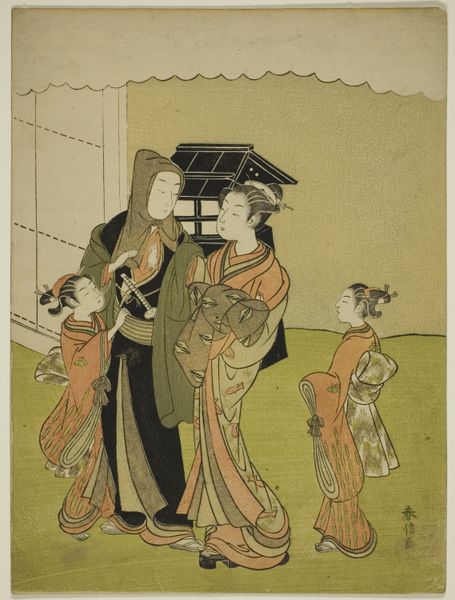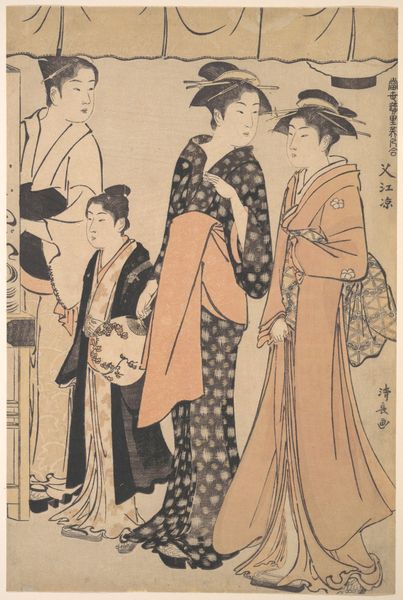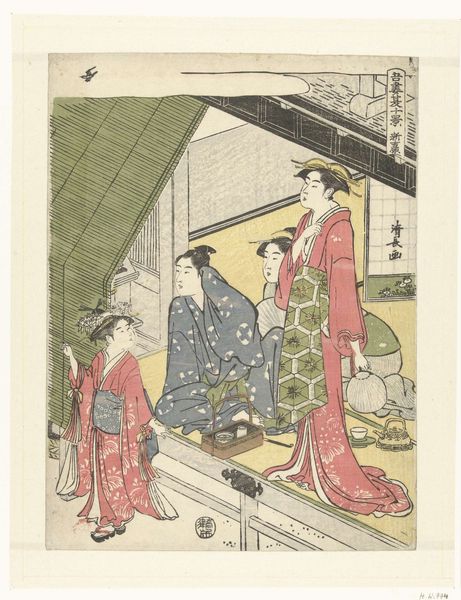
Acteurs Sawamura Sojuro III en Iwai Hanshiro IV als Jihei en Koharu 1782 - 1786
0:00
0:00
toriikiyonaga
Rijksmuseum
print, woodblock-print
#
portrait
# print
#
asian-art
#
ukiyo-e
#
woodblock-print
#
genre-painting
Dimensions: height 389 mm, width 256 mm
Copyright: Rijks Museum: Open Domain
Editor: This woodblock print, "Actors Sawamura Sojuro III en Iwai Hanshiro IV als Jihei en Koharu," made by Torii Kiyonaga sometime between 1782 and 1786, seems to capture a very specific moment, almost like a freeze-frame from a play. There's a sense of melancholy in their expressions, especially on the man's face. What story do you think it's telling, and what significance might it have held for its original audience? Curator: I see here layers of coded emotions expressed through formalized gestures. Consider the downcast eyes: In Ukiyo-e, and even in Japanese culture more broadly, averted gazes are often loaded with unspoken meaning – modesty, sadness, perhaps even a degree of defiance depending on the social context. What could be the implications of staging this emotional narrative in the symbolic space of the theatre? Editor: I didn't consider that. I was focused on them as individual figures, not as parts of a performance with its own set of visual and cultural codes. The way they're positioned in front of the musicians…almost like a stage. Curator: Exactly. Kiyonaga, like many Ukiyo-e artists, draws on well-established cultural symbols. Think about the traditional roles of the actors portrayed. The performance itself would trigger communal memories, invoking specific emotional responses from viewers intimately familiar with these dramatic archetypes. Editor: So the image functions not just as a portrait, but as a cultural touchstone, sparking recognition and deeper associations related to these famous roles. It almost acts like a cultural memory bank? Curator: Precisely. Kiyonaga leverages the viewer’s existing understanding of the Kabuki play to evoke a richer emotional experience, bridging art, theatre and shared cultural consciousness. Each detail echoes elements of a wider societal narrative, so while it might be just two figures for us, for the original audience, the semiotics may unlock deeply shared meanings and stories. Editor: That’s a completely different way to look at it. I’m seeing how it operates on so many levels. Curator: And that is the beauty of this particular genre!
Comments
No comments
Be the first to comment and join the conversation on the ultimate creative platform.
